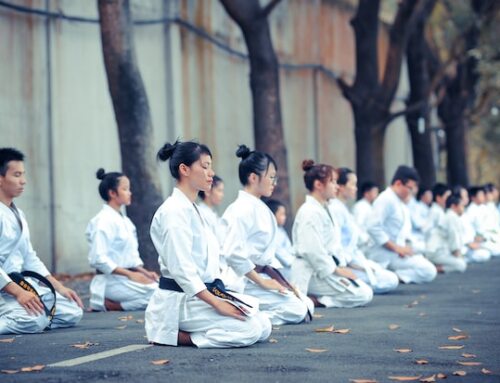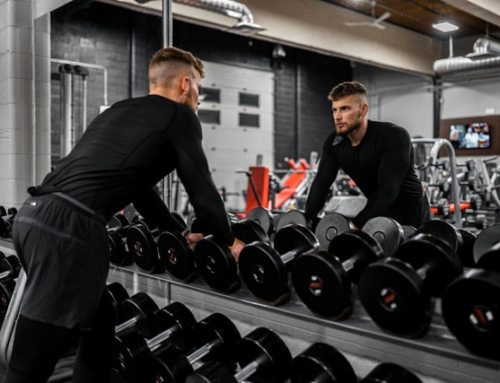COVID brought with it a workout-from-home-revolution. Here’s how you can get started.
Lack of time is the #1 reason people don’t exercise. It’s also why people gain weight when they get married, have kids, or work their way up the corporate ladder… time becomes harder and harder to find.
Enter: working out from home (WOFH).
No commute. No memberships. No time away from the kids or spouse, and only a minimum of space and equipment required.
This post is meant to get you started. I’ll explain two main ways of finding a routine, and then I’ll suggest core components and basic equipment you’ll want to get.
The Free Method: YouTube, Instagram, Etc.
You can find pretty much anything on YouTube for free… workouts included. If you want free cardio or resistance training (more on these below) or some tips on nutrition and fitness, look no further. If you can’t find them here, you can find them somewhere.
The Higher-Production Fitness Apps
Higher-end apps or live workouts cost more, but the presentation, convenience, and objective feedback synced with a smartwatch or phone could help take your exercise to the next level. If you want objective feedback (not a bad idea!), then this may be the way to go.
However, if your idea of objective feedback is how you feel or how drenched in sweat you are, and you don’t mind just scouring YouTube for the right workouts, then the free stuff will suffice for now.
Either way, you’ll want to make sure you include a bare minimum of the following:
Resistance Training
[At least 1x a week for each major muscle group]
This will ensure you at least maintain muscle mass in these areas. If you can, hit each muscle group twice a week to start, so that you can build calorie-burning muscle to keep weight off and increase muscle definition.
You don’t need weights to train your muscles. Bodyweight exercises from pushups to chin-ups to squats can train you effectively.
High-intensity Interval Training (HIIT)
[10-30 minutes, 2x per week]
Even if you’re just looking to bulk up, it’s probably good to challenge your cardiovascular system with some regularity.
HIIT is a time-efficient and potent method to do just that. Just ten minutes of HIIT has been shown to give you the same benefits as less-intense-for-longer-time endurance training.
Doesn’t really matter what you’re doing for the HIIT training. YouTube offers content that varies from jumping all over the place to a more kickboxing style. The point is bringing the heart rate up for a short interval, then taking a short rest, and repeating. You should be working hard enough that you have to take a breath every few words.
If you can carry a conversation while doing HIIT, you’re not working hard enough!
Helpful Equipment
A quality exercise mat is a good idea. Moving around on carpet could damage it, and can be a bit slippery. Hard floors aren’t the best for your joints or muscles, and a mat with the right amount of cushion and grip can make all the difference for longevity.
A set of weights is great, especially if your online programs use them, but they aren’t necessary. You can do bodyweight stuff and hit most if not all of the body, or you can find resistance bands or other equipment to fill your needs.
Having a classic chin-up bar is a great idea. Chin-ups are a great way to exercise the pull muscles. I personally love to do some advanced core exercises on them (Google is your friend!).
(Aside: Pro-Tips for Chin-Ups)
Optionally, a fitness watch can give you objective feedback on heart-rate and estimated calories burned. This becomes important as your body adapts if you want to make sure you’re putting in the proper efforts. But you can always just go by feeling: as things become easier, pick harder workouts or increase your efforts!
Other than that, no need for benches, squat racks or the like, unless you’re planning on making your own home gym.
How Often, How Hard, For How Long?
To start, let’s do 2 WOFH sessions each week, both including ~20 minutes of both resistance and HIIT training respectively. If you find the right programs, you can get a good workout in less than 45 minutes. That’s just 90 minutes a week, not including stretching.
It’s not quite as much as most guidelines will give you, but I think it’s a good number to start, especially if you’re including HIIT training. From here, work your way up to 3x a week.
The best workout is the one you will actually do. If time is short, do what you can and build from there.
Finally, how much effort should I be giving per workout?
You get what you put in. But I also find it takes some getting used to the challenging feelings.
Push your limits and see how you feel after. HIIT training should give you something like a 7-10 out of 10 for how hard you feel like you’re going (in fitness, we call it the Rate of Perceived Exertion). Weight training might be a little less, but the muscles should still be burning before that final repetition.
As long as you’re not feeling that sharp, wince-inducing pain that comes from injury, the discomfort of a hard workout is something you should learn to love!
…
Working out from home can become whatever you want it to be.
Where will you take it? What are your goals?
Check out my other posts on fitness if you want to take your game to the next level:
Stop Using the Scale: An Argument for Measuring Fitness by Appearance Instead of Weight





